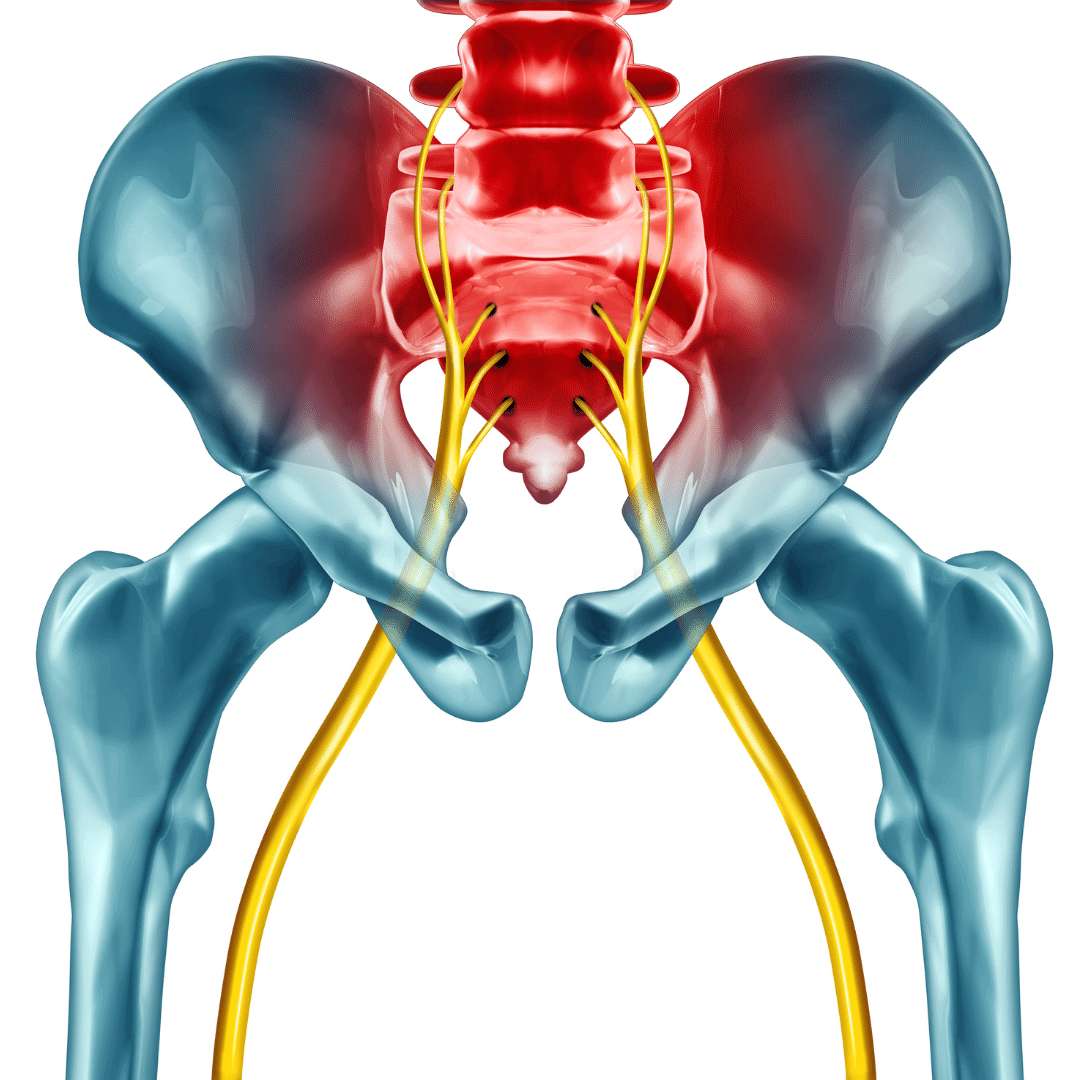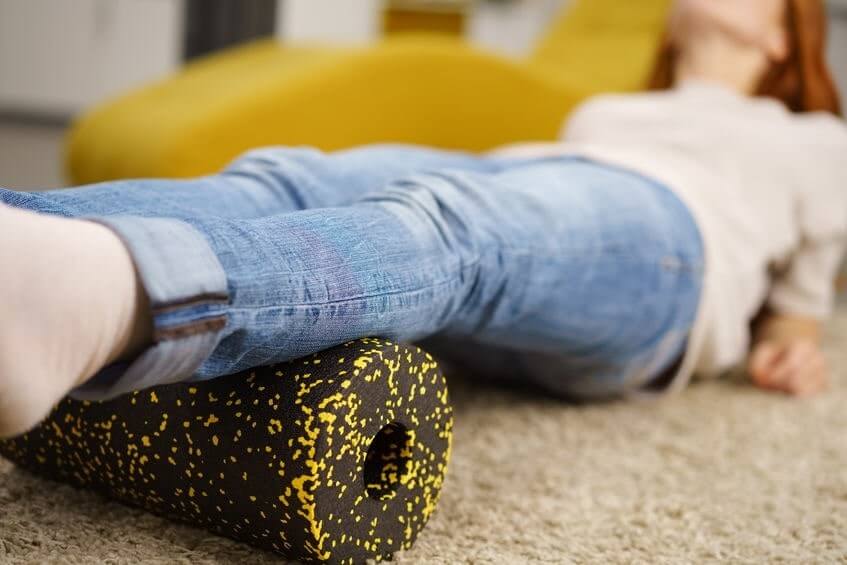
Jump to section
Sciatica is pain due to an impingement or irritation related to the sciatic nerve or nerve root. The sciatic nerve is a large nerve formed from nerve roots that originate from the spinal cord. These nerve roots pass out between the disc spaces and join up to form the sciatic nerve.
Sciatica is a very broad term to describe ongoing lower back and leg pain, particularly affecting the buttock area. You may experience symptoms from your lower back all the way down to your feet.

Sciatica occurs when the nerve roots in your lower back become compressed, pinched or irritated, resulting in varying levels of pain. This could be caused by a number of reasons:
There are a number of factors that can put you at a higher risk of developing sciatica:
With sciatica, you will most likely experience shooting pains or constant pain that starts in your lower spine, then radiates through your buttocks and down the back of your leg.
Other common sciatica symptoms include:

It's important to note, that sciatica can vary in severity, so two people could experience very different symptoms. One may have a dull ache, numbness or tingling, and another could have a burning or stabbing pain that prevents them from walking or standing.
The signs and symptoms of sciatica closely resemble those of other lower back and hip conditions, hence why it is important for one of our Brisbane podiatrists to diagnose your condition and formulate a treatment pathway. We may require a second opinion or aid from another allied health professional to enable the most effective treatment pathway.
Generally avoiding aggravating activities will settle the symptoms and applying a gentle heat pack can help relax and soothe the area.
If the pain has not subsided after a few days, we recommend seeking medical attention from one of our podiatrists to see if we can help you.
When treating sciatica, we often suggest an individualised combination of treatments to allow you to achieve the fastest and most effective recovery.
Depending on your condition, our podiatrists may recommend conjunctive treatment with another health professional.
Below, we have outlined some of the stretches you can do to help your condition. However, we recommend consulting with our podiatrists to get a personalised treatment plan to ensure they are going to be effective for you.
Stretches
Although rare, if you ignore sciatica pain, you could experience some of the following complications:
Although sciatica is not preventable in all cases (e.g. from degenerative disc disease, an accidental fall etc.), there are a number of approaches that you can take to protect your back and prevent the condition.

The more tense you (or your muscles, ligaments and all sorts of fibres) feel, then the more pain you will understandably perceive. Here are
three ways to help relieve this tension in your feet.

Not everyone needs orthotics, but they can play an integral role in treating or relieving pain in several foot and lower limb conditions.

The heat and humidity of an Australian summer makes it a prime time for issues to arise, so our newest podiatrist Lucy has put together
seven helpful tips to keep your feet healthy and problem free throughout summer.
| Monday | 7:40am - 6:00pm |
| Tuesday | 7:40am - 6:00pm |
| Wednesday | 7:40am - 6:00pm |
| Thursday |
7:40am - 6:00pm |
| Friday | TEMP CLOSED |
| Saturday | CLOSED |
| Sunday | CLOSED |
Ground Floor, 344 Queen Street,
Brisbane City QLD 4000
| Monday | 7:40am - 6:00pm |
| Tuesday | 7:40am - 6:00pm |
| Wednesday | 7:40am - 6:00pm |
| Thursday |
7:40am - 6:30pm |
| Friday | 7:40am - 5:00pm |
| Saturday | 7:40am - 4:30pm |
| Sunday | CLOSED |
Newmarket Village, 114/400 Newmarket Rd, Newmarket QLD 4051